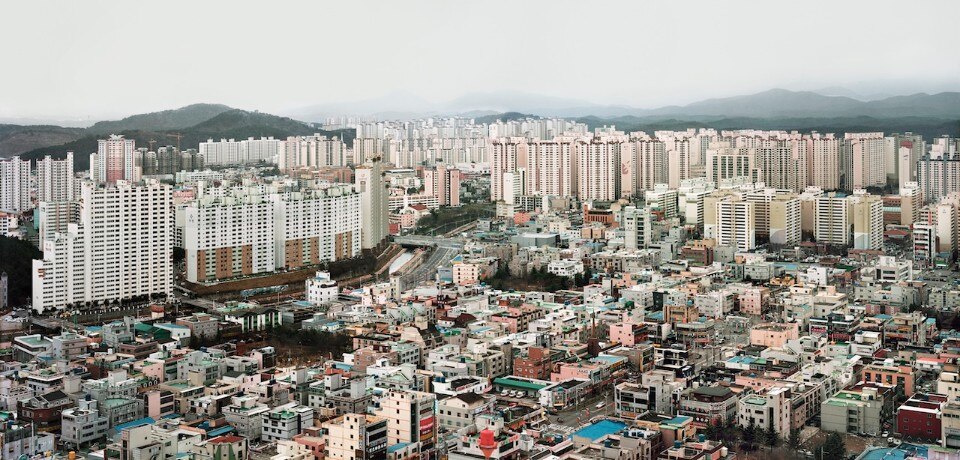In one way or another, the topics explored in the next year of Domus all refer to the idea of planning – for it is clear that planning and coordination are fundamental to the way that we can redirect the resources and meaning of our professional efforts. This first edition introduces the wider context of planning itself. In the modern era, the idea of planning as a professional discipline and the reality of planning as an inevitable requirement of urban development have never sat easily together.
Following the failure of large-scale projects in the postwar years, both planning and architecture suffered a waning of public confidence. More recently this loss of faith has been augmented by the gradual erosion of the status of experts, and a surrender to the entrepreneurial mindset that restrictions impede the development necessary for cities and economies to grow. With development now motivated by private, global investment and fast-rising land values, our civic projects – whether public transportation, housing, cultural centres, hospitals or school systems – are left vulnerable to market forces.
Based on the general attitude of apathy (within government and within our own profession) to progress and protection, to nature and, ultimately, to the identity of the places where we live, we have built on a scale that no longer requires even fundamental concerns of how to plan for our future. Our places, instead, react to a constant present, suggests Reinier de Graaf in Masters of the universe (page 9). Rather than thinking boldly about how we can shape our future, the impulse is to look, with panic, at the past to ask where it all went wrong.
But I have no doubt that architects would like to direct their efforts towards the common good. At its best, planning is not a set of administrative hurdles; it is a powerful and nuanced mediating mechanism that balances the forces of the market with the concerns and rights of citizens, and with the safeguarding of our environment. Surely no other section of society has a more vested interest in the identity of where we live and work, the power of community and the quality of our environment. This is our territory.
But I have no doubt that architects would like to direct their efforts towards the common good. At its best, planning is not a set of administrative hurdles; it is a powerful and nuanced mediating mechanism that balances the forces of the market with the concerns and rights of citizens, and with the safeguarding of our environment.
And yet the social, political and cultural rifts caused by a lack of planning in recent years can neither be corrected through rigorous restrictions and stimulus, nor by realigning public expenditure. At the same time we can no longer allow such unhampered development, motivated by short-term, global investment, to set the agenda. As designers, architects and planners we are in a privileged position to insist that our uncommodified environment – the place we live, go to school, where we work and where we meet – plays a fundamental and positive role in shaping our cities. Moreover, reflects Vittorio Magnago Lampugnani (page 18), urban designers are the only ones with the competence to blend into a concrete form the multitudes of information, needs, desires and aspirations concerning the urban environment.
What’s more, we know all of this. We know that when we allow for these kinds of diverse, complex and supportive environments, society is able to thrive. It is our responsibility to work across communities to create models of better planning engagement and draw attention to them. Take Seoul, for example, whose 2030 Seoul Plan has been designed by its citizens alongside practitioners. Or Zurich, explored by Christian Salewski and Simon Kretz (page 14), where a collaborative planning approach between public, administration, developers and planners has evolved into common criteria and shared action.
Although admittedly a rather Swiss solution, Salewski and Kretz illustrate the critical issue of participation and local engagement in the planning process and how this can reinvigorate the status of planner as expert. But where Switzerland’s citizens and stakeholders work productively together, other cities face more resistance and opposition. In those situations, no one tends to win, and planning fails.
It is our responsibility to work across communities to create models of better planning engagement and draw attention to them. Take Seoul, for example, whose 2030 Seoul Plan has been designed by its citizens alongside practitioners.
Writing in the ever-prescient The Death and Life of Great American Cities, Jane Jacobs wondered whether: “we have become so feckless as a people that we no longer care how things do work, but only what kind of quick, easy outer impression they give. If so, there is little hope for our cities or probably for much else in our society. But I do not think this is so. Specifically in the case of planning for cities, it is clear that a large number of good and earnest people do care deeply about building and renewing.”
As Jacobs recognised, the question of planning – where is it? who does it? who is it for? – has been polarising for as long as people have needed cities to live in. But we should see our moment as an opportunity to realign our priorities, to consider how we might reposition the practice of architecture and its role in society. This comes not through sacrificing architecture’s physical and formal potential, or even its representative importance, but by focusing innovation, research and imagination in a more responsible manner, celebrating societal infrastructure rather than commercial leverage, and coming together as citizens.
With the consultancy of Sarah Handelman.
Opening picture: Thomas Struth, Ulsan 2, Ulsan 2010, detail. Chromogenic print, 159.5 x 323.7 cm. © Thomas Struth


